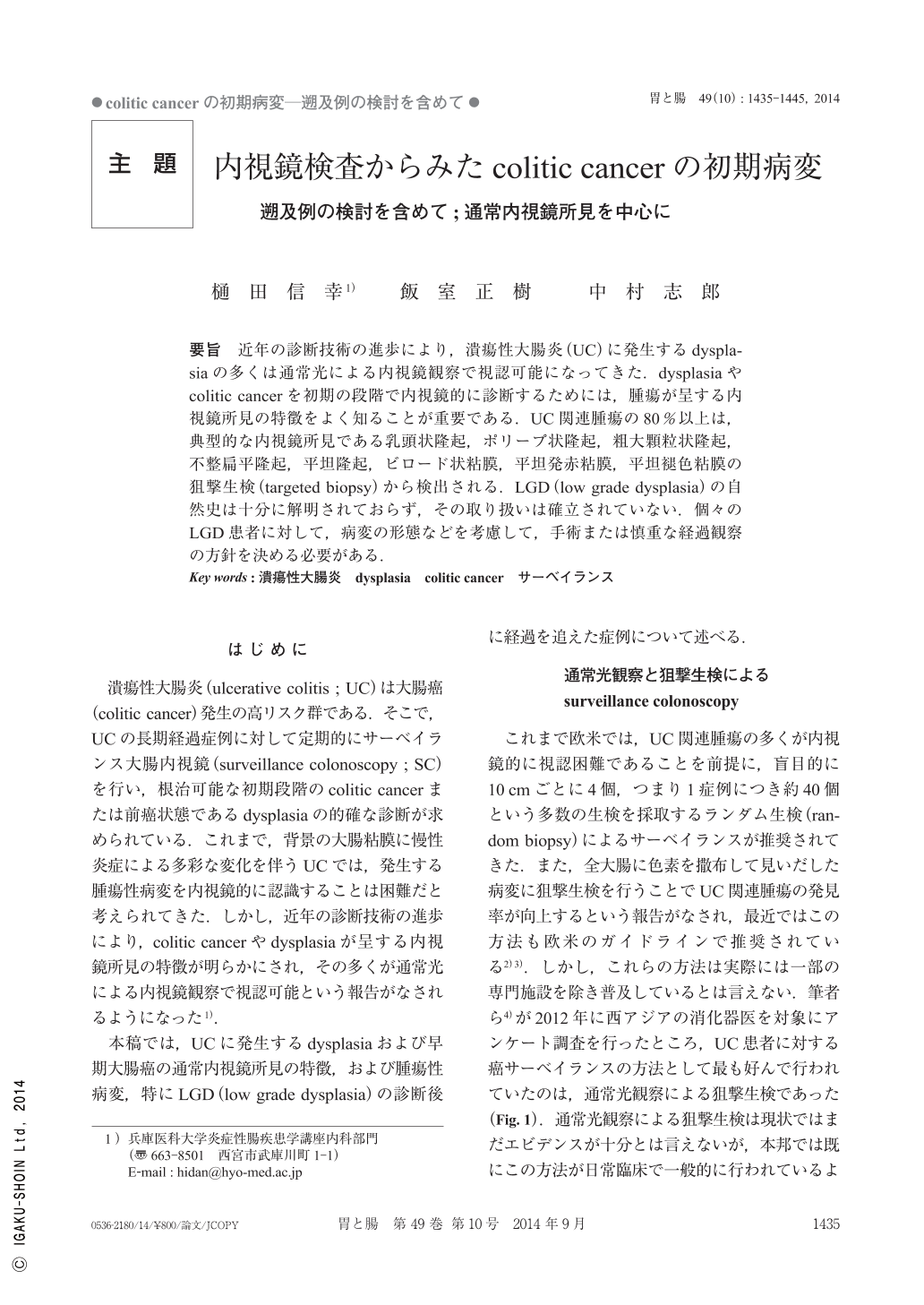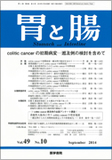Japanese
English
- 有料閲覧
- Abstract 文献概要
- 1ページ目 Look Inside
- 参考文献 Reference
- サイト内被引用 Cited by
要旨 近年の診断技術の進歩により,潰瘍性大腸炎(UC)に発生するdysplasiaの多くは通常光による内視鏡観察で視認可能になってきた.dysplasiaやcolitic cancerを初期の段階で内視鏡的に診断するためには,腫瘍が呈する内視鏡所見の特徴をよく知ることが重要である.UC関連腫瘍の80%以上は,典型的な内視鏡所見である乳頭状隆起,ポリープ状隆起,粗大顆粒状隆起,不整扁平隆起,平坦隆起,ビロード状粘膜,平坦発赤粘膜,平坦褪色粘膜の狙撃生検(targeted biopsy)から検出される.LGD(low grade dysplasia)の自然史は十分に解明されておらず,その取り扱いは確立されていない.個々のLGD患者に対して,病変の形態などを考慮して,手術または慎重な経過観察の方針を決める必要がある.
Recent improvements in endoscopic diagnostic techniques have mostly resulted in dysplasia in patients with UC (ulcerative colitis) being visible during conventional colonoscopy. However, for the correct diagnosis of UC-associated dysplasia or cancer at an early stage it is important to be familiar with the characteristic endoscopic appearances of those lesions. Over 80% of UC-associated neoplasia is reportedly detected by targeted biopsies from typical suspicious lesions ; these include papillary lesions, polypoid lesions, coarse granular lesions, irregular plaque-like protrusions, flat elevated lesions, velvety mucosa, flat reddish mucosa, and flat whitish mucosa. The natural history and the management of LGD (low grade dysplasia) remain unclear. Patients with LGD should decide to undergo either colectomy or close colonoscopic follow-up based on individual features of their disease, such as the form of dysplasia.

Copyright © 2014, Igaku-Shoin Ltd. All rights reserved.


